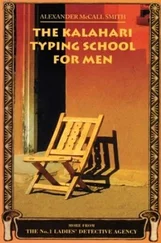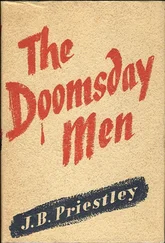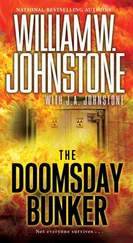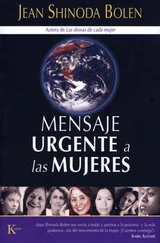From 1942, Glenn Seaborg worked for the Manhattan Project at the University of Chicago. This part of the programme to build the world’s first atomic superweapon was code-named by the military ‘Met Lab’. Here too, Leo Szilard worked with Enrico Fermi to develop CP-1, the first nuclear reactor. In the storm of neutrons unleashed within this graphite and uranium pile, the new element, plutonium, would be born. Seaborg was put in charge of developing the chemical process to extract plutonium after it had been created in the reactor.
Until August 1942, Seaborg had just millionths of a gram of plutonium to work with. The day when he was able to display the first sample of a visible amount of a plutonium compound to his fellow scientists was ‘the most exciting and thrilling’ he had experienced at Chicago: ‘It is the first time that element 94 – or any other synthetic element, for that matter – had been exposed for the eye of man to behold… my feelings are akin to a new father engrossed in the development of his offspring since conception.’ 3
Showing off the newborn element to his colleagues set a precedent, and afterwards visitors to the Met Lab insisted on being shown it. Seaborg later confessed, with a mischievous twinkle in his eye, that due to plutonium’s value and toxicity, most people only ever saw a solution of green ink in a test tube. The man who beat the alchemists at their own game was awarded the 1951 Nobel Prize in Chemistry, while arguably his most diehard fan, Sanford Simons, was still locked up in jail.
Glenn Seaborg shared the prize with his University of California colleague Edwin McMillan, whose discovery of element 93, the shortlived neptunium, had led Seaborg to his lethal chemical child. Neptunium has 93 protons in its nucleus, which is why it is number 93 in the periodic table of the elements. An atomic nucleus consists of protons and neutrons. Many elements, uranium among them, can exist in several different forms, depending on how many neutrons the atom’s nucleus has. These different forms of the element are known as isotopes. Plutonium, element 94, has fifteen isotopes. They range from the lightest, plutonium-232 with 138 neutrons, to the heaviest, plutonium-246 with 152 neutrons. In his career, Seaborg helped to identify over a hundred different isotopes.
When uranium-238 captures a neutron it becomes the unstable isotope uranium-239. Within minutes this transmutes into neptunium-239, which just over two days later becomes plutonium-239. This is the reaction that took place inside Szilard and Fermi’s prototype reactor, CP-1. It is now known that minute traces of plutonium do occur naturally in uranium ore, created by the release of neutrons.
In its solid form, plutonium is a silvery metal which quickly turns yellow when exposed to air. It is warm to the touch – it feels alive, and in a sense it is, constantly emitting a stream of alpha particles (helium nuclei, consisting of two protons and two neutrons). A large piece of plutonium placed in water, would radiate enough heat to bring the water rapidly to the boil. Indeed, this heat has been utilized to produce electricity to power everything from cardiac pacemakers to spacecraft. But bring together too much plutonium in one place and it will go critical, creating a potentially explosive chain reaction. The Nagasaki bomb contained just 13 lb of plutonium and produced the explosive power of 20,000 tons of chemical high explosive. A mere 1 lb can yield 10 million kilowatt-hours of energy. As Seaborg quickly realized, ‘element 94 is almost twice as fissionable as uranium-235’, a finding of huge importance for the atomic bomb project. 4Uranium-235, the rare isotope of natural uranium used in the Hiroshima bomb, was difficult to separate. Seaborg’s discovery meant that bombs could be built with less fissionable material.
Just after the ‘Fat Man’ plutonium bomb was dropped on Nagasaki, a Los Alamos scientist, Harry Daghlian, was fatally injured while assembling pieces of plutonium for an experiment to determine plutonium’s critical mass. A chunk of the warm, silvery metal slipped from his fingers into the assembly, causing it to go prematurely critical. In the fraction of a second before he could scatter the blocks to stop it exploding, he saw the air around the assembly glow with an eerie blue light as it was ionized by lethal radiation. The nuclear scientist died twenty-five days later. Each stage of Daghlian’s radiation sickness was documented by his fellow scientists, eager for knowledge about the lethal new element. The official record states that they obtained ‘most spectacular pictures’. 5
Plutonium is aptly named after the god of the underworld and death. According to Seaborg, plutonium is ‘one of the most deadly substances known, it has unusual – and unreal – properties’. 6It is highly toxic. At Los Alamos the chemists had a policy of ‘immediate high amputation’ if plutonium entered a cut. 7Once inside the body it accumulates at bone surfaces, from where it irradiates surrounding tissues and fatally destroys bone-marrow cells. There is nothing that can be done once it is absorbed into the body: plutonium-239 has a half-life of over 24,000 years. Plutonium remains in your bones long after you are dead and buried.
Plutonium from the Nevada Desert nuclear tests in 1952 and 1953 drifted out of America and settled invisibly on Great Britain within days. Tests on soil samples gathered in Hertfordshire have only recently revealed this chilling fact. It is estimated that our biosphere contains several tons of plutonium, a legacy of atmospheric weapons testing in the 1950s and 1960s. 8Leo Szilard’s vision of global doomsday through nuclear poisoning was happening sooner, but more gradually, than anyone realized. It would not be until the mid-1950s that concerns were voiced about the health effects of the fallout from nuclear tests.
It was this deadly element that so intrigued the 24-year-old Sanford Simons that he was prepared to risk his liberty to possess it. Otto Frisch, whose calculations of critical mass were crucial in the early stages of the bomb project, understood this dangerous fascination with these deadly new elements. When the silvery blocks of highly fissionable uranium-235 were first delivered to Los Alamos in April 1945, he felt an overwhelming ‘urge to take one’. 9They were the first pieces ever made of uranium-235 metal, the element that would blast the heart out of Hiroshima. Somewhat incongruously, Frisch thought that the heavy metal would make a nice paperweight.
Precious elements such as gold have long exerted an almost mystical power over human minds. Gold, the sun-like metal that never rusts or corrodes, promised its owner earthly riches but also eternal life. Alchemists have walked a weary path down through the centuries in their fruitless quest for the secret of this metal. They believed the discoverer of the philosopher’s stone would be able to speed up the natural processes by which, according to alchemistic lore, metals evolve beneath the earth’s surface from base lead to noble gold. Their search was in vain, but there was a nugget of truth in their belief: elements can be transmuted, both in the laboratory and in the earth’s interior, where it has been happening since our planet was first formed. Tragically, however, once we gained this elemental knowledge of the secrets of matter it gave us the key not to eternal life, but to mass destruction on an almost unimaginable scale.
In a lecture delivered one year after the atomic bombing of Japan, Leo Szilard told a Chicago audience that the ‘first and only successful alchemist’ had been God. But when plutonium was created, fulfilling the dream of the ancient alchemists, the first use that humankind found for the new element was to create a bomb to destroy a city. ‘I sometimes wonder,’ said Szilard, ‘whether the second successful alchemist may not have been the Devil himself’. 10
Читать дальше












